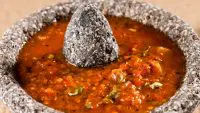Regardless of race, religion, creed or colour, food can bring people together. Most people love a good feed and that too with unique flavours and some variety, whether that be food types, texture, colour or even types/categories of food.
There are unique dishes, treats, drinks, and other delicacies in each country. The salsa dip has its roots in Central and South America. It goes back to other civilizations and an empire.
History/roots of the Salsa dip.
The Maya civilization lasted over 3000 years. The Aztec Empire lasted for almost 100 years, while the Incas civilization lasted for over 100 years. There is one thing in common between the Aztec Empire and the Maya civilization. The salsa dip’s roots go back to the Maya civilization and both the Aztec Empire and the Inca Empire. Prior to the discovery of salsa mix in the early 1500s, Central Americans had been using their salsa mix for many centuries.
A Franciscan missionary named Bernardino de Sahagun remained in New Spain, aka Mexico, remained in Mexico from 1529 onwards, and spent the rest of his life over there. He wrote a book called “Florentine Codex”, in which he did extensive scholarly work. The book contained details about the life of the Aztecs before the fall of the Aztec Empire in the early 1500s when Hernando Cortes conquered it. In the Florentine Codex, de Sahagun pointed out some ingredients used in the Aztec food, which are like the ingredients used in the modern-day salsa dips.

The Spread of Salsa outside Central America.
The Salsa mixes didn’t spread outside of Central America until the Spaniards conquered Mexico. The priest from Spain gave the name Salsa to the sauce. The word salsa means sauce in Spanish.
Old-school and new-age ingredients make up salsa dips. The demand for spicy food increased in the 1800s as the popularity of the sauce grew. In the South-Western US state of Texas and other regions in the Southern-Western U.S.A. Salsa is so popular in the US that people don’t consider it an ethnic food.
Author Neel

